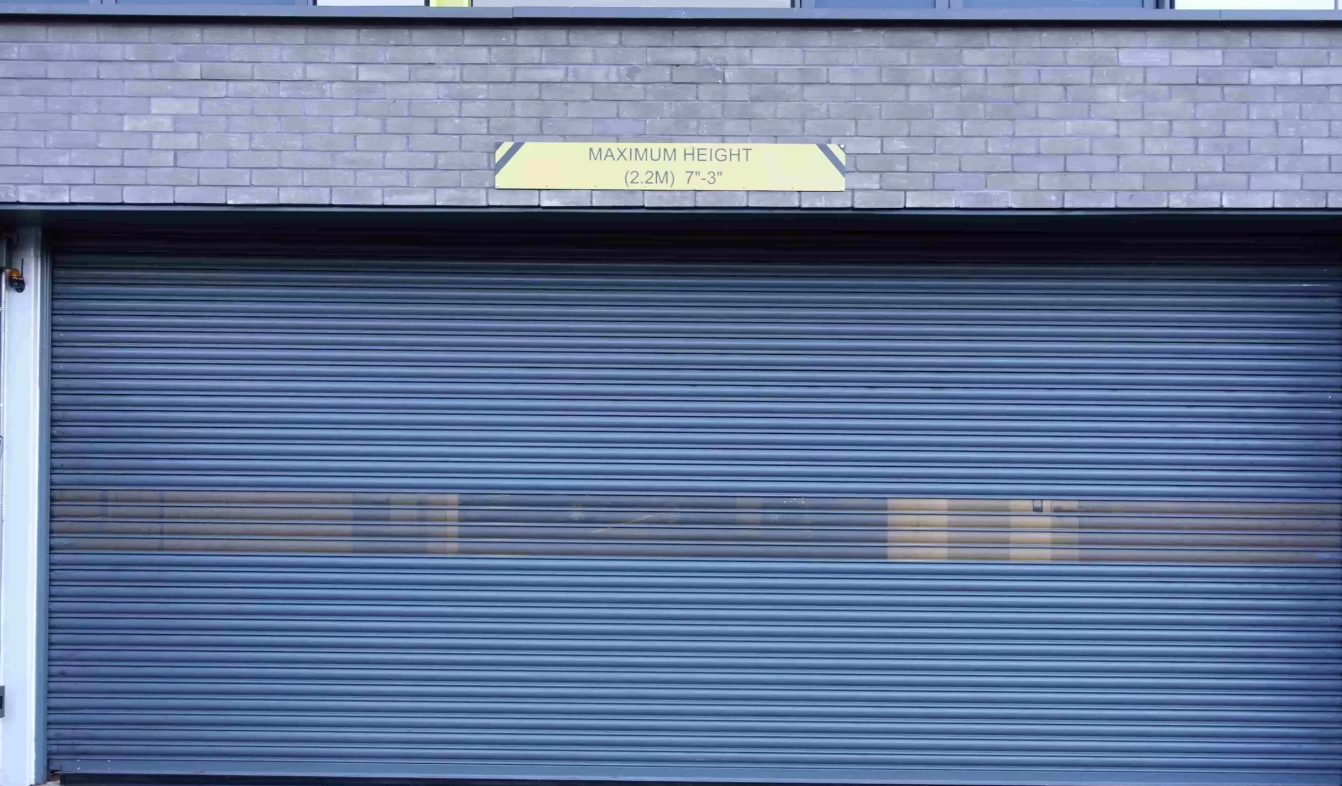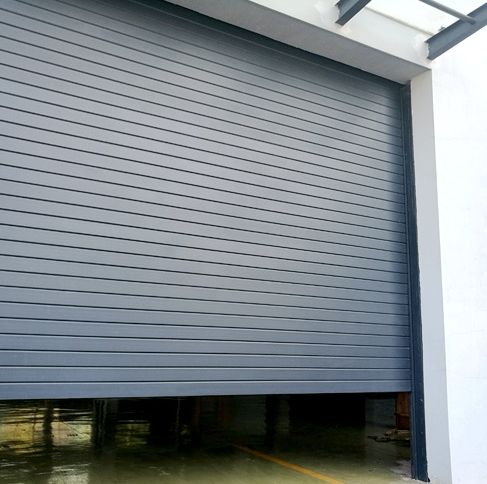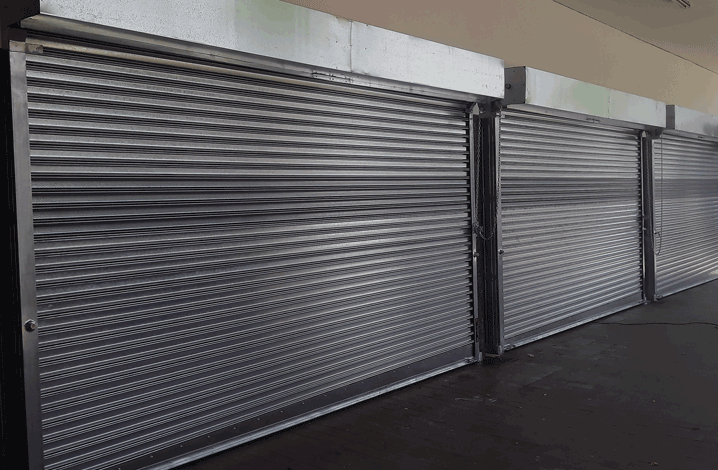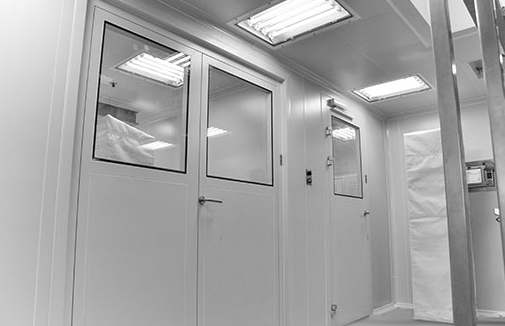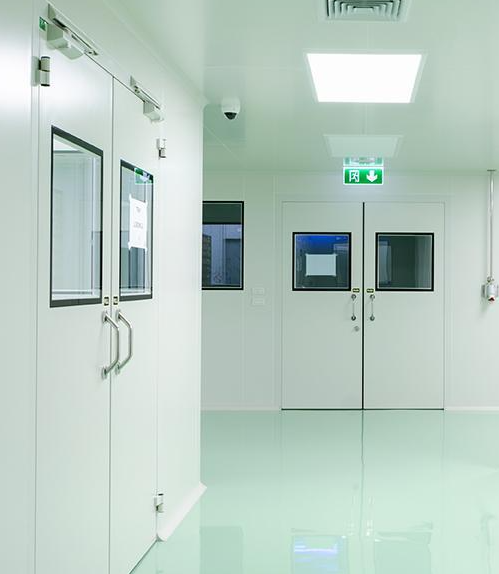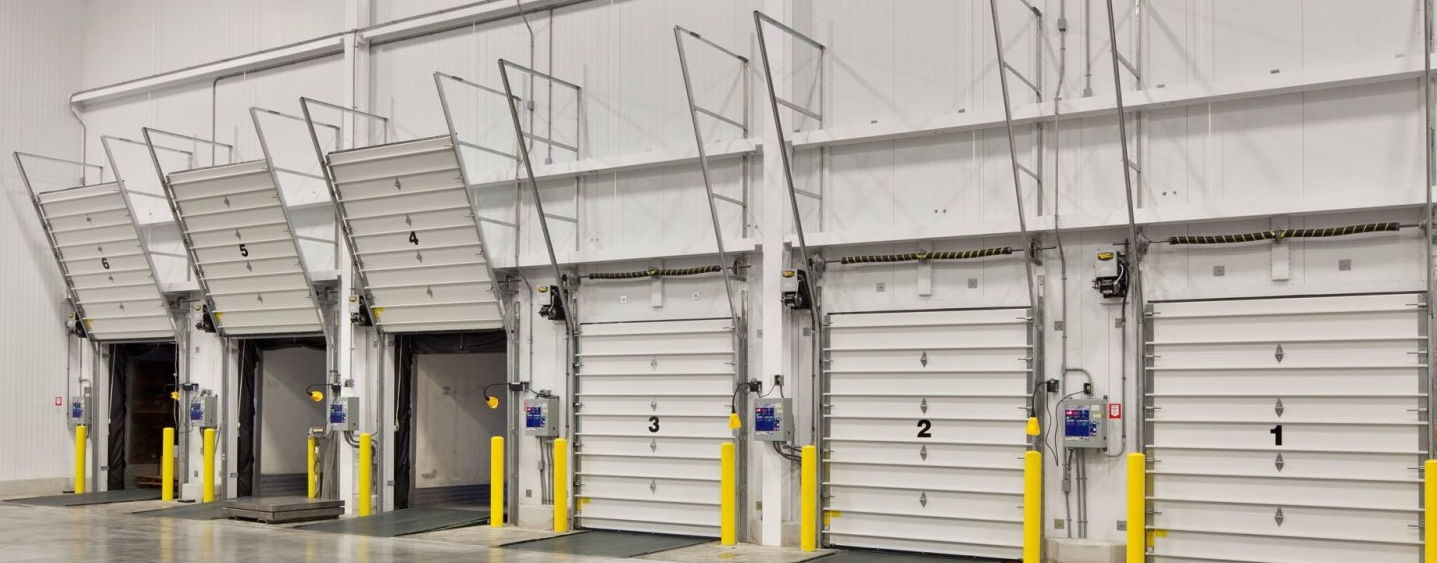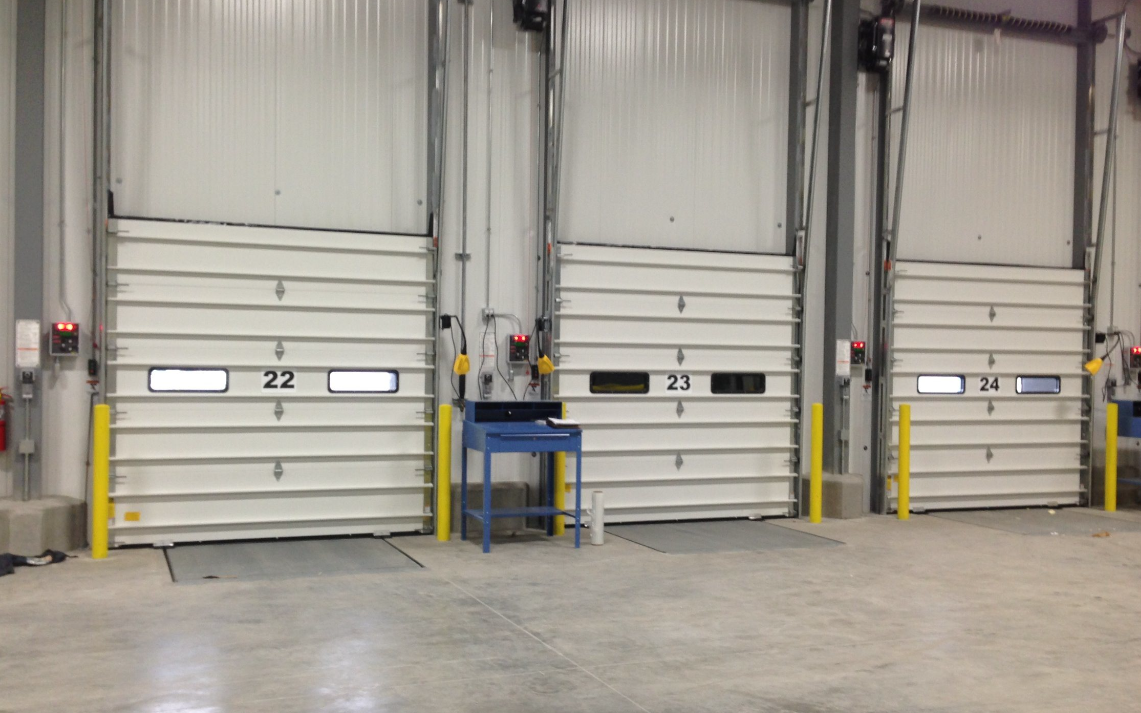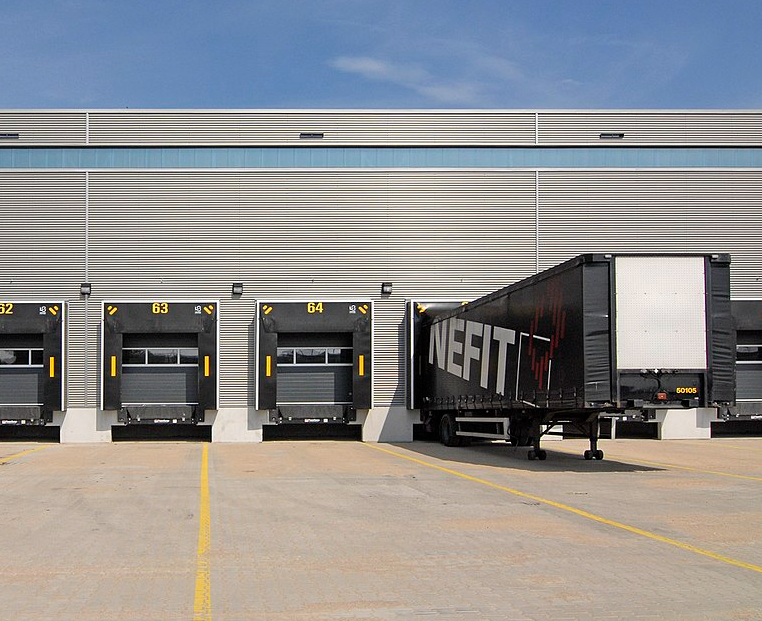What is the standard size of rolling shutter?
The standard size of a rolling shutter varies based on residential, commercial, or industrial needs.
Types of Rolling Shutters
Rolling shutters are widely used for security and protection against external elements. There are several types of rolling shutters, each designed with specific functionalities and for different purposes. Here, we will discuss three primary types: Push and Pull, Gear Operated, and Motorized.
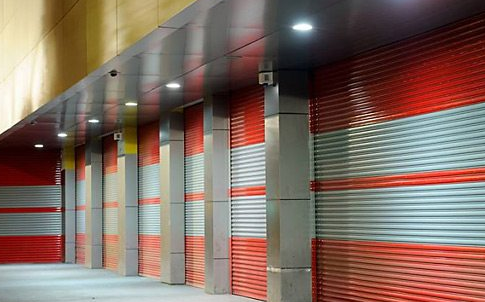
Push and Pull Rolling Shutter
The Push and Pull rolling shutter is the simplest type of shutter. They are manually operated by pushing them up to open and pulling them down to close.
- Features
- Simplicity: These shutters have minimal mechanical parts, making them easy to maintain.
- Cost-Effective: Given their manual operation, they are typically more affordable than other types.
- Flexibility: Ideal for smaller openings where motorized or gear systems may be unnecessary.
- Applications
- Mostly used for residential properties and small commercial shops.
Learn more about Push and Pull Rolling Shutters on Wikipedia.
Gear Operated Rolling Shutter
The Gear Operated rolling shutter is designed with a gear mechanism that eases the manual lifting and lowering process.
- Features
- Ease of Operation: The gear mechanism multiplies the force, making it easier to operate than push and pull shutters.
- Durability: Given the added gear system, these shutters are often more robust and can cover larger openings.
- Safety: They often come with a lock system, enhancing security.
- Applications
- Suitable for larger storefronts, warehouses, and commercial establishments.
Explore the mechanisms of Gear Operated Rolling Shutters on Wikipedia.
Motorized Rolling Shutter
Motorized rolling shutters are the most advanced among the three, equipped with a motor for automatic operations.
- Features
- Convenience: With just a button press, the shutter can open or close.
- Efficiency: Reduces manual effort and provides smooth operation.
- Integration: Can be integrated with security systems and can operate through remote controls or even smartphones.
- Applications
- Best for premium residential properties, large commercial spaces, and areas requiring frequent opening and closing.
Standard Sizes of Rolling Shutters
Selecting the right size for a rolling shutter is imperative to ensure its functionality and effectiveness. While custom sizes are always an option, standardized sizes are more common and often preferred due to ease of installation and replacement. These standard sizes are generally categorized based on their application: Residential, Commercial, and Industrial.
Residential Standards
Residential rolling shutters are designed to fit standard window and door openings in homes.
- Features
- Dimensions: Common sizes for residential windows range from 3 feet in width to 6 feet in height.
- Aesthetics: These shutters are often available in a range of colors and finishes to complement home exteriors.
- Insulation: Many residential shutters offer insulation properties, aiding in energy efficiency.
- Applications
- Used for homes, condominiums, and other residential buildings to provide security and protection from the elements.
More about residential rolling shutters on Wikipedia.
Commercial Standards
Commercial rolling shutters cater to business establishments like shops, offices, and other commercial properties.
- Features
- Dimensions: Standard sizes typically range from 8 to 12 feet in width and up to 10 feet in height.
- Durability: Constructed with heavier materials to withstand more frequent usage and potential vandalism.
- Visibility: Some commercial shutters have perforations or slits, allowing visibility even when closed.
- Applications
- Ideal for storefronts, office buildings, and commercial complexes to provide enhanced security.
Read about commercial security measures on Wikipedia.
Industrial Standards
Industrial rolling shutters are made for factories, warehouses, and large establishments where robustness and durability are paramount.
- Features
- Dimensions: These shutters can be vast, with widths reaching up to 30 feet or more and heights surpassing 20 feet.
- Heavy-Duty: Made with reinforced materials to handle the rigors of industrial environments.
- Automation: Given their size, many industrial shutters come with motorized mechanisms for ease of operation.
- Applications
- Typically found in factories, large warehouses, and dockyards where large entrances and exits are standard.
Factors Influencing the Size of Rolling Shutters
The size of a rolling shutter is not determined arbitrarily. Several factors influence the size of a rolling shutter, ensuring it’s optimized for its purpose and surroundings. Below, we delve into the primary determinants, including the purpose and application, architectural constraints, and local building codes.
Purpose and Application
The core purpose and the intended application of the rolling shutter play a crucial role in determining its size.
- Features
- Security: If the primary reason is security, the size should adequately cover the entire window or doorway without any gaps.
- Weather Protection: For protection against extreme weather, a more snug fit might be necessary to prevent drafts and water leaks.
- Frequency of Use: Daily used shutters, like in shops, might be of medium size, while occasionally used shutters, like storm protection, might cover a larger area.
- Applications
- Homes, shops, factories, and storm-prone areas will each have different size requirements based on their specific needs.
Learn about different purposes of rolling shutters on Wikipedia.
Architectural and Design Constraints
The architecture and design of a building or space can also dictate the size of the rolling shutter required.
- Features
- Building Design: Modern designs might have unconventional window sizes, while traditional designs might have standard windows.
- Aesthetic Appeal: The shutter size should complement the overall design and not appear out of place.
- Space Constraints: Limited spaces might not allow for large shutters, especially in dense urban environments.
- Applications
- From colonial houses to modern offices, each will have unique architectural considerations affecting shutter sizes.
Deep dive into architectural designs and their influence on Wikipedia.

Local Building Codes and Regulations
Legal constraints can also influence the size of rolling shutters, as local authorities often have regulations in place for safety and aesthetics.
- Features
- Safety Standards: Some codes might mandate specific sizes or materials for fire safety or emergency exits.
- Historical Areas: In areas with historical significance, there might be restrictions to maintain the area’s aesthetic.
- Environmental Regulations: Certain coastal or forested areas might have regulations to protect the environment.
- Applications
- Installing shutters in residential zones, commercial areas, or protected zones will each have their unique set of rules and regulations to follow.
Get informed about building codes and regulations on Wikipedia.
Benefits of Using Standard Sized Rolling Shutters
While custom rolling shutters provide tailored solutions, using standard-sized rolling shutters offers numerous advantages. From cost savings to easier maintenance, standard sizes have their place in both residential and commercial settings. Let’s explore the primary benefits of choosing standard-sized rolling shutters.
Ease of Installation
Choosing a standard size means the installation process becomes significantly straightforward.
- Features
- Time-Saving: Standard sizes mean fewer adjustments during installation, speeding up the process.
- Professional Expertise: Most technicians are familiar with standard sizes, ensuring a flawless installation.
- Less Room for Error: Precise dimensions reduce the chances of misalignment or improper fitting.
- Applications
- Especially beneficial for large-scale installations like housing projects or commercial complexes where multiple shutters need fitting.
Explore installation techniques and guidelines on Wikipedia.
Cost Efficiency
Opting for standard sizes often translates to noticeable savings, both in terms of the product and its installation.
- Features
- Economies of Scale: Manufacturers can produce standard sizes in bulk, which often reduces the cost per unit. While a custom shutter might cost anywhere from $500 to $1000 or more depending on the material and size, a standard shutter can be 10-30% cheaper due to bulk production.
- Reduced Labor Costs: Installation of standard sizes is quicker, thereby reducing labor costs.
- Resale Value: Standard sizes have better resale value due to broader appeal and adaptability.
- Applications
- Ideal for budget-conscious consumers or businesses looking to cut down on infrastructure costs.
Understand the economics of production on Wikipedia.
Availability of Replacement Parts
Maintenance becomes more manageable with standard sizes due to the ready availability of parts.
- Features
- Wide Availability: Replacement parts for standard sizes are usually readily available in the market.
- Quick Turnaround: In case of damages, repairs can be done faster as parts don’t need to be custom-made.
- Cost-Effective Repairs: Standard parts often cost less than custom-made ones. For instance, a standard motor might cost around $150, whereas a custom one could be upwards of $250.
- Applications
- Beneficial for properties with high wear and tear or in regions prone to harsh weather conditions, requiring frequent maintenance.

Customized Sizes Vs. Standard Sizes
The debate between choosing customized sizes versus standard sizes for rolling shutters has persisted for some time. Both come with their unique sets of advantages and potential drawbacks. Making an informed decision based on the needs and constraints is essential for long-term satisfaction and value. Let’s delve into when you should consider customized sizes and the pros and cons of each.
When to Consider Customized Sizes
Opting for customized sizes can be a game-changer in specific scenarios.
- Features
- Unique Architectural Designs: If your property has unconventional window or door sizes, custom shutters can provide the perfect fit.
- Specific Functional Requirements: Whether you need shutters with unique insulation properties, soundproofing, or enhanced security features, customized sizes allow for these specificities.
- Aesthetic Choices: Custom shutters can be tailored to specific colors, finishes, and designs to align with a property’s aesthetic.
- Applications
- Particularly beneficial for heritage properties, luxury homes, or commercial spaces aiming for a standout look.
Read about architectural uniqueness and custom designs on Wikipedia.
Pros and Cons of Standard Vs. Custom Sizes
Weighing the benefits and potential drawbacks of standard and custom sizes is critical.
- Standard Sizes
- Pros:
- Cost-Effective: Due to economies of scale, standard shutters are often less expensive. For example, a standard shutter might cost around $400, while a custom size of the same material could start at $600.
- Quick Installation: Technicians are more familiar with standard sizes, ensuring faster installation.
- Readily Available Parts: Maintenance and repairs are streamlined due to readily available parts.
- Cons:
- Limited Design Choices: There might be restrictions in color, finish, and design.
- May Not Be a Perfect Fit: In cases of non-standard window or door sizes, there might be gaps or overlaps.
- Pros:
- Custom Sizes
- Pros:
- Tailored Fit: Ensures the shutter fits perfectly, enhancing functionality and aesthetics.
- Greater Design Freedom: Offers a broader spectrum of design, color, and finish choices.
- Specific Features: Can incorporate unique features like enhanced insulation or soundproofing.
- Cons:
- Higher Costs: Custom manufacturing is more expensive. For a similar quality and feature set, custom sizes could be 20-50% more expensive.
- Longer Lead Times: Manufacturing and installation might take longer compared to standard sizes.
- Pros:

